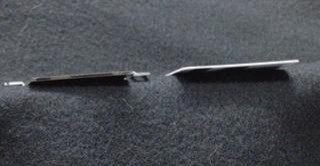GE Adapts Cooling Process From Jets To Consumer Electronics
New GE Process Could Benefit Portable Electronics

General Electric Co. (NYSE:GE), whose vast manufacturing portfolio includes jet engines, has adapted a critical engine cooling process for use in consumer electronics.
Researchers have adapted what they call dual piezo-electric cooling jets (DCJ) used in engines to ultra-thin devices like laptops and tablets, raising prospects they could replace cooling fans and other bulky products.
The DCJ technology, coupled with recent breakthroughs in semiconductors that allow for smaller sizes and greater performance raise possibilities that new products can be developed without the risk of generating too much heat.
Peter de Bock, the lead electronics researcher at GE Global Research Labs in Niskayuna, N.Y., said engineers had been experimenting with DCJ technology for 18 months.
The apparent successful adaptation “can now be considered an optimal cooling solution for ultra-thin consumer electronics products,” he said.
GE has already licensed the new technology to Japan's Fujikura Ltd. (TYO:5083), which also designs products requiring thermal management.
Chris Giovanniello, VP for microelectronics and thermal business development for GE Licensing, suggested the technique could add as many as 30 minutes to battery life, can be “so quiet users won't even know it's running” and be designed into platforms like tablets thinner than 6 mm.
DCJ works to stream pockets of turbulent air over electronics to cool them at 10 times the rate of natural convection. It can be used on devices as thin as 4 mm. Similar technology is used to cool the blades of jet engines that run many hours and require cooling.
GE, based in Fairfield, Conn., said it will also ship demonstration kits of DCJ technology to electronics manufacturers for evaluation.
Shares of GE rose 27 cents to $21.78 in Wednesday trading.
© Copyright IBTimes 2024. All rights reserved.






















